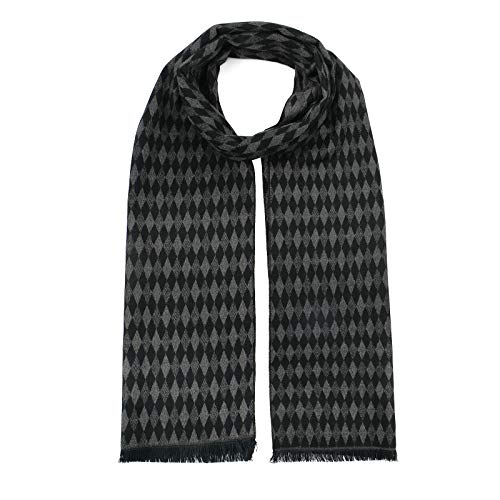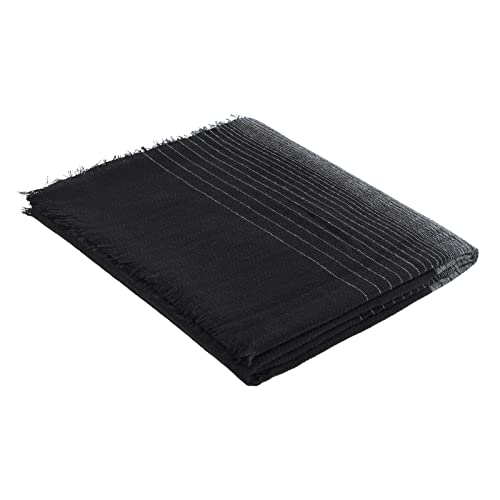As the seasons shift and our outdoor spaces beckon, we often find ourselves dreaming of ways to elevate our backyard sanctuaries. It’s more than just planting; it’s about creating an extension of our personal style that thrives outdoors.
This year, we’re seeing a delightful fusion of fashion and function for your garden. Think beyond the basics with outdoor scarf trends that add a pop of color and personality, and discover the latest in breathable garden shoes designed for both comfort and practicality during long days spent tending to your plants.
Embracing these stylish backyard essentials can transform your connection with nature, making every moment in your garden more enjoyable and aesthetically pleasing. We’ve curated a collection of the most inspiring pieces to help you bloom this season.
Key Takeaways
- Incorporate scarves as cozy garden accents, draping them over furniture or near plants for a welcoming, lived-in feel.
- Cashmere, knit, and blanket scarves add unexpected softness and visual texture, enhancing outdoor spaces with warmth.
- Classic plaid and checked patterns offer timeless appeal, complementing various garden styles and natural elements.
- These fabric accessories are best used in protected areas like covered patios or porches to preserve their integrity.
- Mindful placement away from direct rain and strong sun is crucial for maintaining the beauty and longevity of garden scarves.
- Scarves can transform garden areas into charming, comfortable retreats, blending indoor coziness with outdoor beauty.
| Image |  |  |  |
|---|---|---|---|
| Product | American Trends Mens Winter Warm Cashmere Scarf Plaid Tassel Scarf for Men Soft Long Cotton Scarves Black Diamond American Trends | American Trends Scarfs for Women Winter Triangle Scarf Plaid Warm Scarf Soft Classic Oversized Scarves Large Knitted Wrap Shawl Blue & White & Black American Trends | Trendy Women's Cozy Warm Winter Fall Blanket Scarf Stylish Soft Chunky Checked Giant Scarves Shawl Cape Coffee Warm American Trends |
| Link | Check Price on Amazon | Check Price on Amazon | Check Price on Amazon |
| Material | 80% acrylic/ 20% polyester blend | 80% acrylic | Cashmere-like Acrylic |
| Size/Capacity | 11.8” W x 70.8” L | 55 inches * 55 inches * 95 inches | Oversized square scarf |
| Key Features |
|
|
|
| Depth/Height | |||
| Best For | Winter warmth and stylish accessory | Daily wear, banquets, outdoor events | Cold fall/winter/spring days, travel, gifting |
1. Cashmere Scarf for Cozy Warmth




A touch of refined comfort graces your garden path, bringing a mellow mood. Imagine this supple accent draped artfully over a weathered stone bench, its classic plaid pattern echoing the natural textures of your outdoor haven. Placed at the base of a beloved rose bush, it introduces a layer of visual interest, softening the transition between the plant’s foliage and the earth below. This piece lends an air of approachable elegance, perfect for creating an inviting corner that feels both lived-in and stylish.
Embracing a cozy farmhouse warmth, this accent is designed to delight the sense of touch with its anticipated softness. It elevates your garden from merely functional to a cherished retreat, a place where comfort and understated beauty converge. Consider it a key component in crafting a serene outdoor escape, inviting moments of quiet contemplation and leisurely enjoyment amid familiar, comforting surroundings. The intricate diamond pattern on this particular option offers a subtle geometric contrast to organic forms.
Pros
Offers a sophisticated yet cozy aesthetic, bringing an unexpected softness and visual texture to outdoor spaces. Its classic plaid design provides a timeless appeal that complements various garden styles, while the tasselled ends add a playful touch.
Cons
As an indoor accessory adapted for outdoor styling, it requires careful placement away from direct elements like rain and strong sun to preserve its integrity and appearance over time. Maintenance will likely involve bringing it indoors during inclement weather.
Best for: Creating cozy vignettes on covered patios or porches, or as an artistic accent on garden furniture.
2. Cozy Plaid Wrap Shawl




A touch of refined comfort graces your garden path, bringing a mellow mood. Imagine this supple accent draped artfully over a weathered stone bench, its classic plaid pattern echoing the natural textures of your outdoor haven. Placed at the base of a beloved rose bush, it introduces a layer of visual interest, softening the transition between the plant’s foliage and the earth below.
This piece lends an air of approachable elegance, perfect for creating an inviting corner that feels both lived-in and stylish. Embracing a cozy farmhouse warmth, this accent is designed to delight the sense of touch with its anticipated softness. It elevates your garden from merely functional to a cherished retreat, a place where comfort and understated beauty converge.
Pros
Offers a sophisticated yet cozy aesthetic, bringing an unexpected softness and visual texture to outdoor spaces. Its classic plaid design provides a timeless appeal that complements various garden styles, while the tasselled ends add a playful touch.
Cons
As an indoor accessory adapted for outdoor styling, it requires careful placement away from direct elements like rain and strong sun to preserve its integrity and appearance over time. Maintenance will likely involve bringing it indoors during inclement weather.
Best for: Creating cozy vignettes on covered patios or porches, or as an artistic accent on garden furniture.
Get more details and current pricing on Amazon.
3. Chunky Knit Cozy Scarf




A delightful softness graces the garden path evoking a sense of cozy calm. Consider draping this inviting accent over the arm of a weathered teak chair, its rich coffee hue a warm counterpoint to the wood grain. Placed atop a collection of river stones, it introduces an unexpected layer of plush texture, bridging the gap between the natural elements and the seating.
This piece embodies a comforting farmhouse warmth, designed to appeal to the sense of touch with its anticipated plushness. It transforms your garden from a mere outdoor space into a cherished haven, where tactile comfort and subtle beauty intertwine. This is perfect for crafting an intimate corner that feels both welcoming and effortlessly stylish, inviting moments of serene repose amidst the greenery.
Pros
Offers a chic yet cozy aesthetic, bringing an unexpected tactile softness and visual depth to outdoor arrangements. Its classic checked pattern provides a timeless appeal that complements various garden styles, and the generous size allows for versatile styling.
Cons
As a fabric accessory, it requires mindful placement away from direct moisture and prolonged sun exposure to maintain its beautiful appearance and integrity over time. Protecting it from the elements will be key to its longevity.
Best for: Creating inviting nooks on covered porches or patios, or as an artful accent draped over garden seating.
4. Soft Winter Blanket Scarf




A welcoming softness invites you to linger by the garden border. Drape this cozy accent across the arm of a wrought-iron bench, its classic black and white pattern providing a chic contrast to the metalwork. Placed against a backdrop of deep green foliage, it adds a welcoming touch, blurring the lines between outdoor comfort and indoor warmth.
This piece brings a sophisticated yet approachable charm, perfect for creating a moment of visual repose. It introduces an unexpected layer of plush texture, enhancing the tactile experience of your outdoor sanctuary. Embrace this element to craft an inviting nook that feels both stylish and deeply comforting, encouraging tranquil moments amidst your beloved garden.
Pros
This versatile accessory offers a chic yet cozy aesthetic, bringing an unexpected softness and visual texture to outdoor settings. Its classic black and white check provides a timeless appeal that complements many garden styles, making it an easy addition to existing decor.
Cons
As a fabric item intended for indoor comfort, this piece will require mindful placement. To preserve its beautiful appearance and integrity over time, it should be protected from direct rain and prolonged sun exposure.
Best for: Creating inviting vignettes on covered patios or porches, or as an artful accent draped over garden seating.
5. Warm Plaid Wrap Scarf




A playful splash of color brightens your garden wall. Drape this vibrant accent over a rustic trellis, its cheerful pink plaid harmonizing with climbing roses. Placed at the base of a large terracotta planter filled with cascading petunias, it introduces an unexpected softness and visual delight.
This piece embraces a bohemian charm, designed to delight the eyes with its lively hues. It transforms your garden from simply green to a joyful expression of personality, where comfort and spirited beauty dance together. Consider it key for curating a whimsical corner that feels both enchanting and welcoming, encouraging spontaneous moments of delight amidst the blooms.
Pros
Offers a vibrant and cozy aesthetic, bringing a cheerful softness and unexpected pattern to outdoor arrangements. Its colorful plaid design provides a lively appeal that complements a more playful garden style, while the generous size allows for versatile draping.
Cons
As a fabric accessory, it requires careful placement away from direct moisture and strong sunlight to preserve its beautiful colors and integrity over time. Protecting it from the elements will be essential for its longevity.
Best for: Creating charming accents on covered porches or patios, or as a vibrant flourish draped over garden structures.
Get more details and current pricing on Amazon.
This post contains affiliate links. Purchases may earn me a commission at no extra cost to you.
FAQs
Q: What are the latest trends in scarves?
Latest trends in scarves include oversized cashmere wraps, vibrant patterned silk squares, and lightweight, breathable linen scarves for transitional weather.
Q: How should I care for my new scarf?
Care instructions for scarves vary by material. Generally, hand washing with mild detergent and air drying is recommended for delicate fabrics like silk and cashmere, while machine washing on a gentle cycle may be suitable for cotton or synthetic blends.
Q: What are the most popular scarf sizes?
Popular scarf sizes range from petite 18×18 inch silk squares to large 50×50 inch wraps. Standard rectangular scarves often measure between 12×60 inches and 20×70 inches.
Q: Are there specific scarf styles trending for different occasions?
Yes, for casual wear, infinity scarves and chunky knit scarves are trending. For formal events, satin or velvet scarves with subtle embellishments are popular choices.
Q: What materials are best for year-round scarf wear?
For year-round versatility, consider scarves made from natural fibers like cotton, linen, and lightweight wool blends. These materials offer breathability in warmer months and insulation in cooler temperatures.
Q: How do I choose a scarf that complements my outfit?
Consider the color palette, pattern, and texture of your outfit. A neutral-colored scarf can add sophistication, while a brightly colored or patterned scarf can serve as a bold statement piece.
Top 10 Latest Trends From Scarfs To Shoes





Conclusion
Fabric accessories like scarves and blankets can add a touch of cozy warmth and visual texture to outdoor spaces, especially on covered patios or porches. While these items enhance aesthetics, their longevity depends on protection from direct rain and prolonged sun exposure. Choose a cashmere scarf for refined comfort, a chunky knit for tactile softness, or a vibrant plaid wrap for a cheerful accent.
Recommended Products
- Cashmere Scarf for Cozy Warmth – Offers a sophisticated yet cozy aesthetic with a classic plaid design and tasselled ends.
- Chunky Knit Cozy Scarf – Features a chic yet cozy aesthetic with a checked pattern and generous size for versatile styling.
- Warm Plaid Wrap Scarf – Provides a vibrant and cozy aesthetic with a colorful plaid design and ample size for creative draping.

Angelina Everly leads the editorial desk at Live Green Gardens, blending practical plant care, hands-on product testing, and approachable outdoor styling. She focuses on step-by-step how-tos, buyer’s guides, and small-space makeovers that work in real life and real budgets. When she’s not comparing pruning shears or setting up a drip kit, you’ll find her creating cozy corners with planters, solar lights, and pollinator-friendly picks—always with clear pros/cons and safety notes so you can buy once and garden happy.

